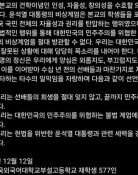Dizziness: Causes and Treatment
Dizziness: Causes and Treatment
Posted January. 16, 2006 03:00,

A 35-year-old office worker, Lee, who lives in Yeongdeungpo-gu, Seoul, was immobilized recently because of a bout of dizziness that made the ceiling revolve above him. If he moved the slightest bit, the dizziness would cause him to vomit. After these symptoms continued, he eventually became afraid to stand up.
Lee was worried that he had a problem in his brain due to the cold weather. However, his doctor told him that it was his ear, not his brain, that was the problem.
Most people who experience dizziness in winter usually stay in their homes. They are worried about cerebral palsy or strokes caused by the cold.
However, over 80 percent of patients suffering from dizziness have a problem with their ears. In addition, dizziness is aggravated in winter, when ones physical activity level is low.
After researching 765 patients over a period of three years, the Hana Otolaryngology Dizziness Clinic discovered that dizziness symptoms occurred 25 to 30 percent more often between October and January.
Ear Problems Account for 80 percent of Dizziness Cases
One does not need to be sick to be dizzy. Seasickness aboard a ship, vertigo from looking down from someplace high, and disorientation while riding a roller coaster are all normal. The problem is feeling dizzy when not in such situations.
Dizziness is divided into peripheral dizziness, where there is something wrong with the ear, and central where there is problem with the brain.
If you feel dizzy and feel like everything around you is spinning, you should have an ear check up.
But if you suffer from double vision, your hands and feet are numb, or you feel paralysis, the dizziness could be attributed to brain trouble.
Dizziness is also caused by anxiety, however. In such cases, dizziness is not accompanied by vomiting and a severe revolving sensation. Hyperventilation syndrome, when ones breathing become fast and one collapses, is a common side effect as well.
Balance Problems Often Occur After Mid Life
In professional jargon, the most common dizziness affliction is called benign paroxysmal positional vertigo. It is called that because one feels dizziness when shifting into a particular position. It is also benign because there are treatments for the affliction.
Inside the ear, there are vestibular organs responsible for balance. The organs are the cochlear canal, semicircular canal, and otoconia. If the otoconia do not remain in place and fall into the semicircular canal, dizziness is caused.
The semicircular canal is responsible for circular senses, and when the otoconia fall and stimulate the circular senses, one feels dizzy. The otoconia can fall when one injures ones head in an car accident, but in most cases they fall for more particular reasons.
One may suspect he or she has this affliction if one feels dizzy when shifting position, such as when waking up, turning over when lying down, lowering ones head to wash hair, or raising ones head.
It is often found in the elderly, but recently, the number of middle-aged dizziness sufferers is increasing. Usually, severe dizziness symptoms will go away within a minute. In most cases, however, less severe manageable dizziness will remain for about a day. If left untreated, the dizziness will worsen, which could lead to nausea, vomiting, hypersensitivity, and depression.
A Single Treatment Will Improve Over 90 Percent of Symptoms
At a hospital, a dizziness patient will undergo a series of tests, including hearing, balance, and blood tests. Usually the disorder will be treated naturally, but it will often recur, so another treatment is to remove the otoconia that may be stuck inside the semicircular canal.
The otoconia inside the semicircular canal returns to its normal place when one changes positions. The most common method for inducing otoconia return is to sit down, suddenly lay to the side of the problem for about five minutes, slowly raise ones head in the opposite direction, repeating on the other side of ones body for about five minutes, and returning to a sitting position. This is more effective if one remains standing for 30 minutes afterward.
With a single treatment, doctors and therapists can alleviate about 90 percent of dizziness symptoms. After treatment, dizziness symptoms can be further reduced with home therapy head-and-eye movement exercises that last about four to six weeks. Sports such as tennis, badminton, bicycling, and golf, and walking, can increase ones sense of balance as well.
(Written with the assistance of Samsung Seoul Hospital Otolaryngology professor Chung Won-ho and Hana Clinic director Park Sang-wook.)
Jin-Han Lee likeday@donga.com






![넘치는 전재수 과거 사진들…유죄의 증거일까, 무죄의 증거일까[청계천 옆 사진관]](https://dimg.donga.com/c/138/175/90/1/wps/NEWS/IMAGE/2025/12/20/132997378.1.jpg)
